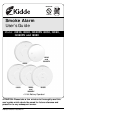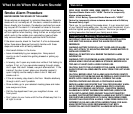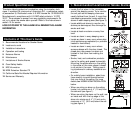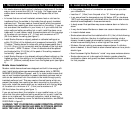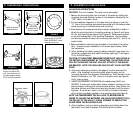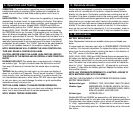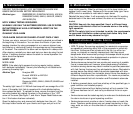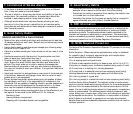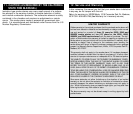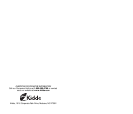
Welcome
i9030, i9040, i9040RV, i9050, i9060, i9060RV, - 9 Volt Battery
Operated Smoke Alarm with “HUSH” Control to temporarily
silence nuisance alarms.
i9080 - 9 Volt Battery Operated Smoke Alarm with “HUSH”
Control to temporarily silence nuisance alarms and with Battery
Powered Safety Light.
Thank you for purchasing this smoke alarm. It is an important part
of your family’s home safety plan. You can trust this product to pro-
vide the highest quality safety protection. We know you expect
nothing less when the lives of your family are at stake.
Important Warning Statements
IMPORTANT! READ ALL INSTRUCTIONS BEFORE INSTALLATION
AND KEEP THIS MANUAL NEAR THE ALARM FOR FUTURE
REFERENCE.
WARNING: BATTERY DOOR WILL NOT CLOSE AND/OR ALARM
WILL NOT ATTACH TO MOUNTING BRACKET UNLESS BATTERY IS
INSTALLED CORRECTLY.
REMOVAL OF BATTERY WILL RENDER THE SMOKE ALARM
INOPERATIVE.
WARNING: TEST YOUR SMOKE ALARM OPERATION AFTER RV OR
MOBILE HOME VEHICLE HAS BEEN IN STORAGE, BEFORE EACH
TRIP AND AT LEAST ONCE A WEEK DURING USE.
CAUTION: DUE TO THE LOUDNESS OF THE ALARM (85 DECIBELS),
ALWAYS STAND AN ARMS-LENGTH AWAY FROM THE UNIT WHEN
TESTING.
CAUTION: BEFORE USING THE ALARM HUSH FEATURE, IDENTIFY
THE SOURCE OF THE SMOKE AND BE CERTAIN A SAFE CONDITION
EXISTS. NOTE: DENSE SMOKE WILL OVERRIDE THE HUSH
CONTROL FEATURE AND SOUND A CONTINUOUS ALARM.
SMOKE ALARMS ARE DEVICES THAT CAN PROVIDE EARLY WARN-
ING OF POSSIBLE FIRES AT A REASONABLE COST; HOWEVER,
ALARMS HAVE SENSING LIMITATIONS. IONIZATION SENSING
ALARMS MA
Y DETECT INVISIBLE FIRE PARTICLES (ASSOCIATED
WITH FAST FLAMING FIRES) SOONER THAN PHOTOELECTRIC
ALARMS. PHOTOELECTRIC SENSING ALARMS MAY DETECT VISIBLE
FIRE PARTICLES (ASSOCIATED WITH SLOW SMOLDERING FIRES)
SOONER THAN IONIZATION ALARMS. HOME FIRES DEVELOP IN
DIFFERENT WAYS AND ARE OFTEN UNPREDICTABLE. FOR MAXI-
MUM PROTECTION, KIDDE RECOMMENDS THAT BOTH
IONIZATION AND PHOTOELECTRIC ALARMS BE INSTALLED.
Smoke Alarm Procedure
NEVER IGNORE THE SOUND OF THE ALARM!
Smoke alarms are designed to minimize false alarms. Cigarette
smoke will not normally set off the alarm, unless the smoke is
blown directly into the alarm. Combustion particles from cook-
ing may set off the alarm if it is located too close to the cook-
ing area. Large quantities of combustion particles are generat-
ed from spills or when broiling. Using the fan on a range hood
which vents to the outside (non-recirculating type) will also
help remove these combustion particles from the kitchen.
If the alarm sounds, check for fires first. If a fire is discovered,
follow these steps. Become thoroughly familiar with these
steps and review with all family members:
• Alert small children in the home.
• Leave immediately by your escape plan. Every second
counts, so don’t waste time getting dressed or picking up
valuables.
• In leaving, don’t open any inside door without first feeling its
surface. If hot, or if you see smoke seeping through cracks,
don’t open that door! Instead, use your alternate exit. If the
inside of the door is cool, place your shoulder against it,
open it slightly and be ready to slam it shut if heat and
smoke rush in.
• If the air is smoky, stay close to the floor. Breathe shallowly
through a cloth, wet if possible.
• Once outside, go to your selected meeting place and make
sure everyone is there.
• Call the fire department from your neighbor’s home - not
from yours!
• Don’t return to your home until the fire officials say that it is
all right to do so.
What to do When the Alarm Sounds!



